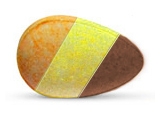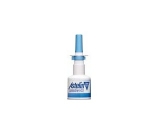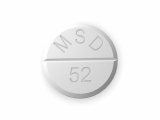Erectile pain after peyronie s surgery
If you have undergone Peyronie's surgery and are experiencing erectile pain, you are not alone. This complication is relatively common and can have a significant impact on your quality of life. In this article, we will explore the causes of post-surgery erectile pain and discuss treatment options.
Causes of Erectile Pain After Peyronie's Surgery
One possible cause of erectile pain after Peyronie's surgery is nerve damage. The surgery may damage nerves that are responsible for sending signals to the penis, leading to pain during erections.
Another possible cause of erectile pain is scar tissue. Peyronie's surgery involves removing or reshaping scar tissue that has formed in the penis. This can lead to further scar tissue formation, which may cause pain during erections.
Treatment Options for Erectile Pain After Peyronie's Surgery
If you are experiencing erectile pain after Peyronie's surgery, there are several treatment options available:
Medication: Your doctor may prescribe pain medication or muscle relaxants to relieve your symptoms.
Injections: Injecting a medication such as verapamil into the penis may help to break down scar tissue and reduce pain.
Surgery: If other treatment options have not been successful, your doctor may recommend surgery to remove scar tissue or repair nerve damage.
Final Thoughts
Erectile pain after Peyronie's surgery can be a frustrating and uncomfortable complication. However, there are effective treatment options available. If you are experiencing erectile pain, speak to your doctor about the best course of action for your individual situation.
Causes of Erectile Pain After Peyronie's Surgery
Scar Tissue Build-Up
One of the most common causes of erectile pain after Peyronie's surgery is scar tissue build-up. The surgical procedure can cause scar tissue to form in the penis, which can then cause pain during erections. Scar tissue can also lead to a decrease in penis size and curvature, which can further contribute to erectile pain.
Nerve Damage
Another possible cause of erectile pain after Peyronie's surgery is nerve damage. The surgical procedure can sometimes damage the nerves in the penis, which can lead to pain and decreased sensation during erections. In some cases, nerve damage can also cause erectile dysfunction.
Infection
Infection is a rare but serious complication of Peyronie's surgery. If an infection develops in the surgical site, it can cause pain, swelling, and redness. In severe cases, an infection can even lead to a loss of penile function. If you experience these symptoms after surgery, seek medical attention immediately.
Treatment Options
- Pain medication can help to alleviate discomfort during erections.
- Penile rehabilitation therapy can help to improve penile function, reduce pain, and prevent scar tissue build-up.
- If nerve damage is the cause of erectile pain, nerve regeneration therapy may be an effective treatment option.
- In rare cases of infection, antibiotics or additional surgery may be necessary to treat the infection and prevent further complications.
If you are experiencing erectile pain after Peyronie's surgery, it is important to speak with your healthcare provider to determine the underlying cause and appropriate treatment options.
Penile curvature correction
What is penile curvature correction?
Penile curvature correction is a surgical procedure that aims to treat Peyronie's disease, which is characterized by a curved and painful erection. The surgery involves removing the plaque or scar tissue in the penis that causes the curvature, and then straightening the penis.
Why choose penile curvature correction?
Penile curvature correction can significantly improve the quality of life for men with Peyronie's disease. It can reduce pain during sexual intercourse, and improve the ability to achieve and maintain an erection. After surgery, men can enjoy a full and satisfying sex life.
Benefits of penile curvature correction:
- Straightens the penis
- Reduces pain during sex
- Improves erectile function
- Improves self-confidence and quality of life
What to expect after surgery?
After the surgery, there will be some swelling and bruising in the penis. It is important to rest and avoid sexual activity for a few weeks. Your doctor will provide you with detailed instructions on how to care for yourself after the surgery, and when it is safe to resume sexual activity.
Are you a good candidate for penile curvature correction?
If you have Peyronie's disease and are experiencing pain and difficulty achieving or maintaining an erection, you may be a good candidate for penile curvature correction. Talk to your doctor to determine if this surgery is right for you.
| Procedure type: | Outpatient surgery |
|---|---|
| Anesthesia: | Local anesthesia or sedation |
| Duration: | Approximately 1 hour |
| Recovery time: | 2-4 weeks |
Penile lengthening procedures
Enhance your confidence with penile lengthening procedures
If you're feeling less confident because of your penis size, consider penile lengthening procedures. Our expert team can provide surgical solutions that not only enhance size, but also improve function and performance.
Safe and effective penile lengthening options
We offer a range of safe and effective penile lengthening options, including:
- Penile traction therapy
- Penile girth augmentation
- Penile lengthening surgery
Experienced and caring surgeons
At our clinic, you can trust our experienced and caring surgeons to provide personalized solutions tailored to your individual needs and goals. We pride ourselves on our high success rates and patient satisfaction.
Start your journey to a happier, more confident you
Contact us today to schedule a consultation and start your journey to a happier, more confident you.
| Benefits | Risks |
|---|---|
|
|
Implant placement
What is Implant Placement?
Implant placement is a surgical procedure in which a penile implant is inserted into the penis to treat erectile dysfunction. This procedure is often recommended for patients who have failed to respond to other treatments, such as medication or injections, and have severe erectile dysfunction.
Types of Implants
There are two main types of penile implants: inflatable and malleable. Inflatable implants are the most common and allow for an erection to be achieved by pumping fluid into the implant. Malleable implants are less common and are made of a flexible rod that can be bent into position for an erection.
The Implant Placement Procedure
The implant placement procedure typically involves making an incision in the scrotum or pubic area and inserting the implant into the penis. The procedure typically takes around one hour and is performed under general anesthesia.
- The patient will need to avoid sexual activity for several weeks after the procedure.
- It is important to follow the doctor's instructions carefully to maximize the success of the procedure.
- Patients should also attend follow-up appointments to monitor the success of the procedure and identify any potential complications.
Potential Benefits of Implant Placement
Implant placement has been shown to be an effective treatment option for severe erectile dysfunction. Patients who undergo this procedure often report improved sexual function and increased confidence in their relationships.
| Benefits | Considerations |
|---|---|
| Improved sexual function | Requires surgery |
| Increased confidence in relationships | Potential for complications |
If you are struggling with severe erectile dysfunction, implant placement may be an option to consider. Talk to your doctor about whether this procedure is right for you.
Treatment Options for Erectile Pain After Peyronie's Surgery
1. Medication
One of the most effective treatment options for erectile pain after Peyronie's surgery is medication. Your doctor may prescribe pain medication or anti-inflammatory drugs to help alleviate discomfort and reduce inflammation. Additionally, you may also receive medication to improve blood flow and enhance sexual function.
2. Physical Therapy
Physical therapy can also be beneficial in managing erectile pain after Peyronie's surgery. Your therapist can show you exercises and stretches to strengthen pelvic muscles, improve blood flow, and reduce pain and discomfort during sexual activity.
3. Vacuum Therapy
Vacuum therapy, also known as vacuum erection devices, involve creating a vacuum around the penis to draw blood into the area and produce an erection. This therapy can help alleviate pain during sexual activity and improve sexual function overall.
4. Surgery
In cases where medication and other therapies do not produce the desired results, surgery may be necessary. Your doctor may recommend a surgical procedure to remove scar tissue or repair damage in the penis.
5. Counseling
Dealing with erectile pain after Peyronie's surgery can be emotionally challenging. Your doctor may recommend counseling or therapy to help you cope with anxiety, depression, or other emotional issues related to your condition.
Conclusion
If you are experiencing erectile pain after Peyronie's surgery, there are several treatment options available to alleviate your discomfort and improve your sexual function. It's important to talk to your doctor to determine which treatment options are best for your individual needs and health situation.
Medications
Oral Medications
If you are experiencing erectile pain after Peyronie's surgery, your doctor may prescribe oral medications, such as phosphodiesterase type-5 inhibitors (PDE5 inhibitors) like sildenafil (Viagra), tadalafil (Cialis), and vardenafil (Levitra). These medications work by increasing blood flow to the penis, which can help to reduce pain and improve erection quality.
It is important to note that these medications are not suitable for everyone and may have side effects. Always follow your doctor's instructions and inform them of any side effects you experience.
Injections
Your doctor may also recommend penile injections as a treatment option. These injections contain medications, such as alprostadil, that help to relax the smooth muscles in the penis and increase blood flow.
- The injection is done with a small needle into the side of the penis
- The medications used in the injections are safe and effective when used correctly
- Your doctor will provide instructions on how to use the injections and what to expect
Surgical Options
In some cases, surgical options may be considered as a treatment for erectile pain after Peyronie's surgery. These include:
- Penile implants
- Vascular surgery to improve blood flow
- Nerve grafting to repair damaged nerves
It is important to discuss all treatment options with your doctor to determine the best course of action for your individual needs and situation.
Physical therapy
What is physical therapy?
Physical therapy is a type of treatment that involves physical methods such as exercise, massage, and heat therapy to improve bodily function and reduce pain. It is often recommended after surgery, such as Peyronie's surgery, to help with recovery and rehabilitation.
How can physical therapy help with erectile pain?
Physical therapy can help with the erectile pain that may result after Peyronie's surgery by improving blood flow, reducing scar tissue, and increasing overall flexibility. This can lead to increased comfort during sexual activity and reduced pain.
What types of physical therapy may be used?
There are several types of physical therapy that may be used after Peyronie's surgery, including pelvic floor exercises, manual therapy, and electrotherapy. Pelvic floor exercises can help strengthen the muscles that support the bladder, bowel, and penis. Manual therapy involves hands-on techniques such as massage to help reduce pain and improve range of motion. Electrotherapy uses electrical pulses to stimulate nerves and muscles, which can help improve blood flow and reduce pain.
If you are experiencing erectile pain after Peyronie's surgery, physical therapy may be a helpful treatment option. Talk to your doctor about whether physical therapy is right for you.
Surgical interventions
Penile Prosthesis Implantation
One of the most effective surgical interventions for Peyronie's disease is penile prosthesis implantation. This involves the insertion of an inflatable or malleable device into the penis to provide an erection. The prosthesis is designed to help the patient achieve a rigid erection and improve sexual function.
Advantages: High success rate, reliable and long-lasting results, improved sexual function.
Disadvantages: Invasive procedure, risk of complications such as infection or mechanical failure, requires a surgical operation.
Penile Plication
Penile plication is a surgical procedure that involves suturing the tunica albuginea (the fibrous tissue covering the corpora cavernosa) to correct curvature caused by Peyronie's disease. The goal of this procedure is to straighten the penis and improve sexual function.
Advantages: Less invasive than prosthesis implantation, can be performed as an outpatient procedure, shorter recovery time.
Disadvantages: Not suitable for severe curvatures, not as effective for restoring rigidity compared to prosthesis implantation.
Collagenase Injection
Collagenase injection involves the injection of an enzyme (collagenase) directly into the Peyronie's plaque to break down the collagen fibers and reduce the curvature. This procedure is less invasive than surgery and can be performed in an outpatient setting.
Advantages: Less invasive than surgery, can be performed as an outpatient procedure, shorter recovery time.
Disadvantages: Not as effective as surgery, requires multiple injections over a period of time, risk of complications such as penile swelling or bruising.
- Choose the surgical intervention that best suits your needs.
- Consult with your doctor before deciding on any surgical intervention for Peyronie's disease.
- Consider the advantages and disadvantages of each procedure.
Follow us on Twitter @Pharmaceuticals #Pharmacy
Subscribe on YouTube @PharmaceuticalsYouTube





Be the first to comment on "Erectile pain after peyronie s surgery"